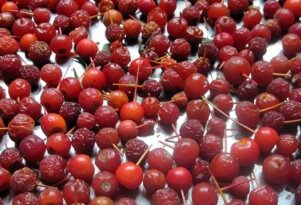Peppercorn Plants
You look at this modest spice and find it hard to believe than all through Antiquity and the Middle Ages it was more valuable than gold.
Pepper was the first of the exotic spices to reach the Mediterranean Basin and the search for it opened up traveling routes that became legendary and fired people’s imagination for almost a thousand years – the Silk road, the Incense route, the travel around the Cape of Good Hope.
The search for silk and spices established commerce, built empires, caused the discovery of new lands and bred better than fantasy travel stories mixed with extravagant make believe for good measure.
Stories of lands far-far away with exorbitantly rich rulers and palaces of pure gold, of animals never seen before and luscious fruit hanging from every branch, stories of shaded gardens and fountains cloistered in the desert, and fierce warriors and beautiful women wrapped in bedazzled silk robes the color of the sun and ripe berries.
Peppercorns themselves were a status symbol, like the color purple, silk fabrics and fine precious metal tableware, but in its native land, the jungle of the Indian Malabar coast, the plant is a modest vine that grows ten foot tall and bears stringy clusters of red berries.
The berries turn to peppercorns when dry. The still green ones become black and the red ripe ones stay red, while white pepper is made by removing the shells of the red peppercorns.
Starting the plants from seed is not easy, although the peppercorns from the spice jar are indeed as good a seed as any. Those who want to experiment with growing peppercorn plants would have to submerge the seeds in an acidic bath to mimic the digestive processes that happen in a bird’s stomach. Most peppercorn plants are started from cuttings and need to be replaced every seven or eight years.




 Previous Post
Previous Post




